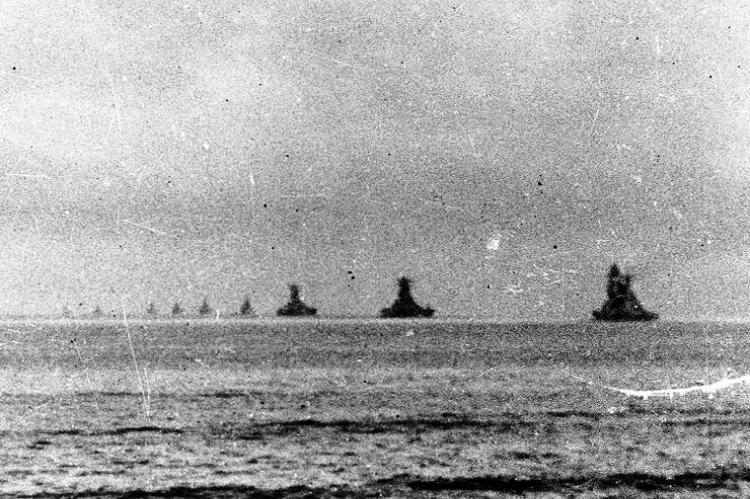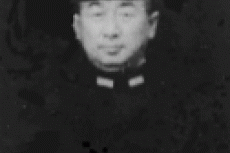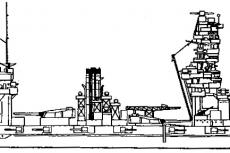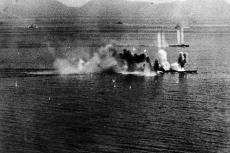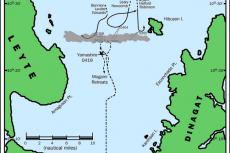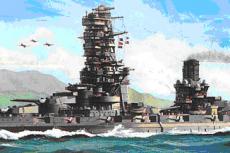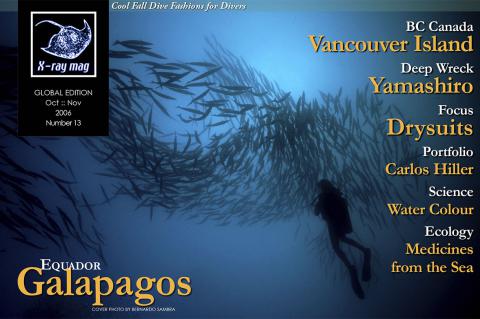Japanese Battleship
Nowadays, the name Yamashiro could have different meanings depending on where you come from. If you live in Los Angeles, a huge pagoda near Hollywood is the oldest structure in California and hosts a famous restaurant named Yamashiro or “Mountain palace” in Japanese. If you live in Kyoto, Japan, Yamashiro is the name of an area close-by.
And for the older generation, it’s also the name of a never forgotten Japanese battleship lost during WWII during one of the major battles of naval history, the battle of Leyte, October 1944. Finally, if you’re a scuba diver, you might have heard about the wreck of the HIJMS Yamashiro as definitely the most challenging shipwreck in the world, because of the remoteness of the location, the extreme depth and the very bad diving conditions.
Tags & Taxonomy
October 24th, 1944
Vice-Admiral Shoji Nishimura doesn’t like the way everything goes. Nishimura is known for his high respect of the orders. No matter what orders he had, he would carry them out even though they could result in the annihilation of himself and his command. For the time being, he doesn’t know that it’s exactly what will happen in the next few hours in the Surigao Strait.
Only a year after being nominated as a Vice-Admiral, he is named commander of the Southern force of the Operation Sho-Go, as the Imperial Japanese Navy Headquarters in Tokyo search for a final and decisive naval battle against the Americans in the Philippines. His force (named Force C) consists of battleships Fuso and Yamashiro (his flagship), heavy cruiser Mogami, and destroyers Shigure, Michishio, Asagumo, and Yamagumo. And now, he has to go through the Strait of Surigao to attack the Allied invasion shipping in Leyte Gulf.
July 18th, 2006
Three technical divers and more than six hundred kilograms of diving equipment are boarding the boat that Rob Lalumiere, an American expatriate and an avid deep wreck diver, uses to provide the surface support to the Yamashiro Project team. A team made of three technical divers coming from very different horizons. I am originally from France but spend most of my time travelling around the world to teach rebreather diving. Pim van dem Horst does the same in his dive school in the Netherlands. Bruce Konefe, also an American citizen, resides and teaches technical diving in Thailand. We all come to Leyte, a remote island in the Philippines, to dive the Yamashiro and the Fuso.
Bruce and I spent the last ten months gathering information about the wrecks and the logistics that could be used for such extreme dives. We quickly both came to the conclusion that it’s a combination of heaven and hell.
Heaven because the wreck of the Yamashiro lies in pristine condition, still proud of her 213 m/699 feet length, her twelve heavy 14 inch guns and her famous 44 m/144 feet high superstructure nicknamed Pagoda.
Hell because the current is never less than 7 knots, the visibility on the bottom is close to 5m/15 feet, the maximum depth is almost 200m/656 fsw (only 160m/ 525 fsw for her sistership HIJMS Fuso, sunk in two parts only a few miles away). It also means that the team knows what a “Logistical nightmare” is.
There is no dive center to fill the tanks or rent some equipment. There is no recompression chamber less than twelve hours away. The closest boat available for technical divers, a private boat owned by Rob, comes from Ormoc, fifteen hours north. The closest town, Hinundayan, has only a few houses on a small road that looks like it is constantly being repaired, and more than ten people talking together at the same time is a major event in this very quiet area.
Everything has to be brought from Europe, Thailand or Manila. Soda Lime and small tanks for the rebreathers, spare parts, Helium, Oxygen... in short, an expedition as easy to set up as a wedding party on top of Mt. Everest.
Shooting a fish in a barrel
October 24th, 1944
Since its departure from Brunei two days ago, Vice-Admiral Nishimura considers himself lucky, as his force has remained undetected by the US Navy. Unknown to him though, some aircrafts took off the USS Franklin to strike an attack on his ships. They are spotted a few minutes later, as they prepared to drop their bombs on the two battleships. Fortunately, the damages will be minor and nothing will happen for the rest of the afternoon. However, Force C has been uncovered, and US Navy ships from the 7th Fleet gather in the Strait of Surigao to welcome the Japanese fleet.
Its American opponent, Rear Admiral Oldendorf, had deployed his overwhelming forces to gain the maximum advantage, barring the Strait with an incredible layer of PT boats, destroyers, and finally, the great guns of cruisers and no less than six battleships. Amongst them, the deadly USS West Virginia, California and Tennessee, recently equipped with the new Mark 8 fire control radar, an improved system that better discriminated narrow targets in close proximity.
It’s late in the afternoon when Vice-Admiral Nishimura heads to the Strait. He is now well aware of the trap that is waiting for him, as a scout plane from ...
(...)
Download the full article ⬇︎
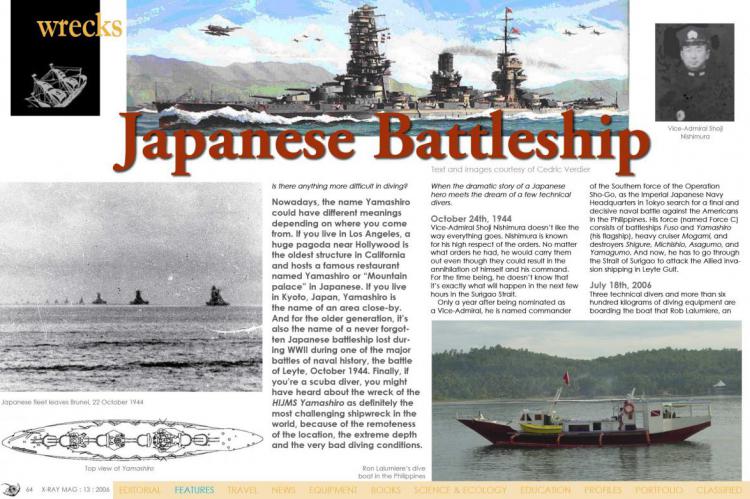
Originally published
X-Ray Mag #13
Travel: Bernardo Sambra and Jason Heller takes us on an adventure to amazing Galapagos, while Barb Roy guides around Vancouver Island. Drysuits! Dressing up right for fall diving: 13 packed spreads with (almost) everything you ever wanted to know about drysuit diving. And to cater for the after-diving, a Dive Fall Fashion section. There are some very cool watches too. As for side dishes we got plenty of News about people, training issues, Whales & Dolphins, Sharks and Turtles, New Books and oh... Did you know why Water is Blue? Also in the science section: Medicines from the Ocean. Cedric Vedier takes us down on a WW2 Japanese Battleship and as t he eye candy in the end some amazing paintings by Carlos Hiller



